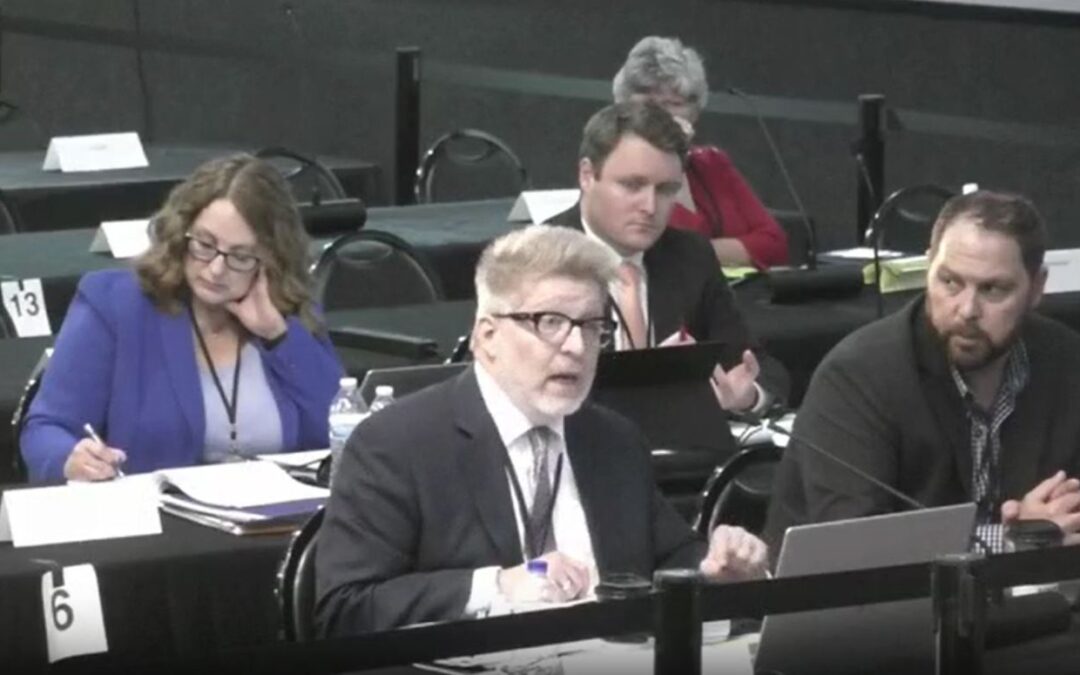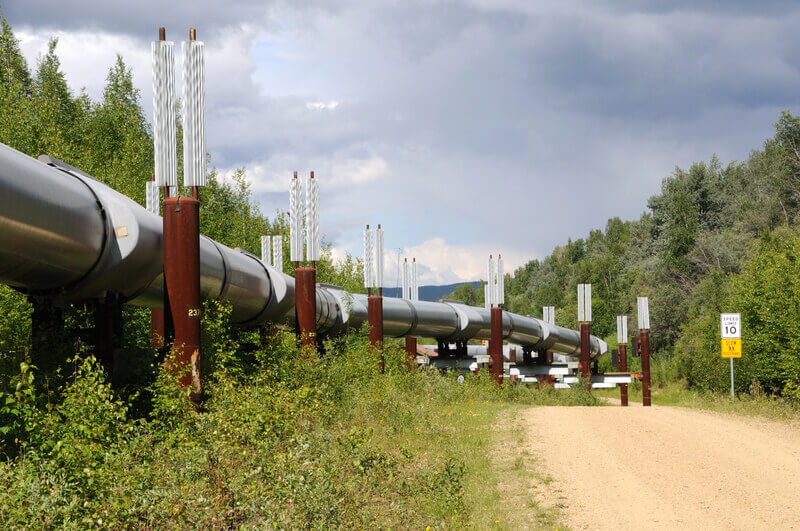
by Jordan Mason | Sep 1, 2023 | Archived
Across the country, farmers and small communities are desperately rallying to protect their land and families from thousands of miles of new “carbon capture” pipelines being built as a result of Democrats’ misleadingly titled “Inflation Reduction Act” (IRA).
In total, the IRA contained some $783 billion in spending related to Democrats’ environmental agenda, much of which came in the form of lucrative subsidies for utility companies to make energy production more “green.” As a result, hundreds of corporations have scrambled to vacuum up a portion of the funding.
Several dozen ventures have sprung up to build a network of carbon capture pipelines which would extend from the Great Lakes down to Texas and across the Midwest to Maine and Florida.
Carbon capture technology is a process designed to mitigate the release of carbon dioxide (CO2) emissions. It involves capturing CO2 from industrial processes or power plants, transporting the captured CO2 to a storage site (via a network of pipelines) and storing it deep underground in depleted oil and gas fields or saline aquifers to prevent its release into the atmosphere.
The practice has enjoyed some bipartisan support in Congress in recent years, and several Republican governors have endorsed pipeline proposals. However, for all the hopeful, high-minded talk about carbon capture technology, most of the public has been left in the dark on the effectiveness and environmental impact of this technology.
The carbon capture and transport process carries significant risks, many of which the citizens of Satartia, Mississippi, learned first-hand in February 2020 when an underground carbon capture pipe burst and sent plumes of carbon dioxide rushing through the town. A recent article from The Intercept described the scene: “People were acting like zombies, dazed and walking in circles or gazing back blankly as responders yelled for them to evacuate. Others convulsed, drooling, as panic-stricken family members called 911.”
The pipeline operator waited an hour before informing first responders that the gas was highly compressed carbon dioxide and not natural gas, as was initially believed. Forty-nine citizens were hospitalized, and many sustained traumas that affect them to this day.
This incident highlights serious concerns about the rapid proliferation of carbon capture pipelines. Highly compressed carbon dioxide is is entirely odorless and, when in gas form, is not subject to the same level of regulation as oil and natural gas. Americans are often unaware that a CO2 pipeline is going in near their home until digging begins.
While construction companies that stand to make a killing from building the pipelines and investors that will enjoy the lucrative tax benefits from the projects are all in favor of them, Americans on both sides of the political aisle have formed some unlikely alliances to push back against this component of Democrats’ environmental agenda.
In Iowa, for instance, which is set to become home to hundreds of miles of CO2 pipelines, liberal environmental groups are teaming up with conservatives like ex-GOP Congressman Steve King to oppose $8 billion in proposed carbon capture infrastructure in the Hawkeye State. Eminent domain hearings are currently underway to determine if construction companies for one of those projects, the $4.5 billion Summit pipeline, can begin seizing farmers’ land to run the pipeline through.
The Summit pipeline is set to terminate in North Dakota, where it has forged another improbable alliance between mostly white farmers and Native American tribes. While the farmers are similarly concerned about the pipeline cutting through their land and potentially endangering their crops, Native Americans have said that the project will cut across lands that are sacred to their tribes.
This presents a particularly thorny issue for the White House, as President Joe Biden cited a concern for Native American heritage sites as one reason behind his decision to cancel the Keystone XL pipeline back in 2021. Notably, that project would have only straddled or run alongside Native American lands, while several of the proposed CO2 pipeline projects would run directly through them.
So far, North Dakota regulators have denied a siting permit for the Summit pipeline’s proposed route in the state, but Governor and Republican candidate for president Doug Burgum has been a strong backer of the project.
More public hearings are scheduled for September, where conservative farmers and liberal environmental activists are both expected to voice their frustrations.
The upcoming Iowa caucuses, now just a few months away, could also help make the debate over CO2 pipelines a high-profile national story heading into next year. Multiple Republican candidates have already been asked about it by Iowa voters, a pattern the mainstream media is starting to pick up on.
It will be deeply ironic if, after making opposition to the Keystone XL pipeline a major issue in his 2020 campaign, Biden’s support for a network of CO2 pipelines becomes a major liability for him in 2024.
Andrew Abbott is the pen name of a writer and public affairs consultant with more than a decade of experience in DC at the intersection of politics and culture.
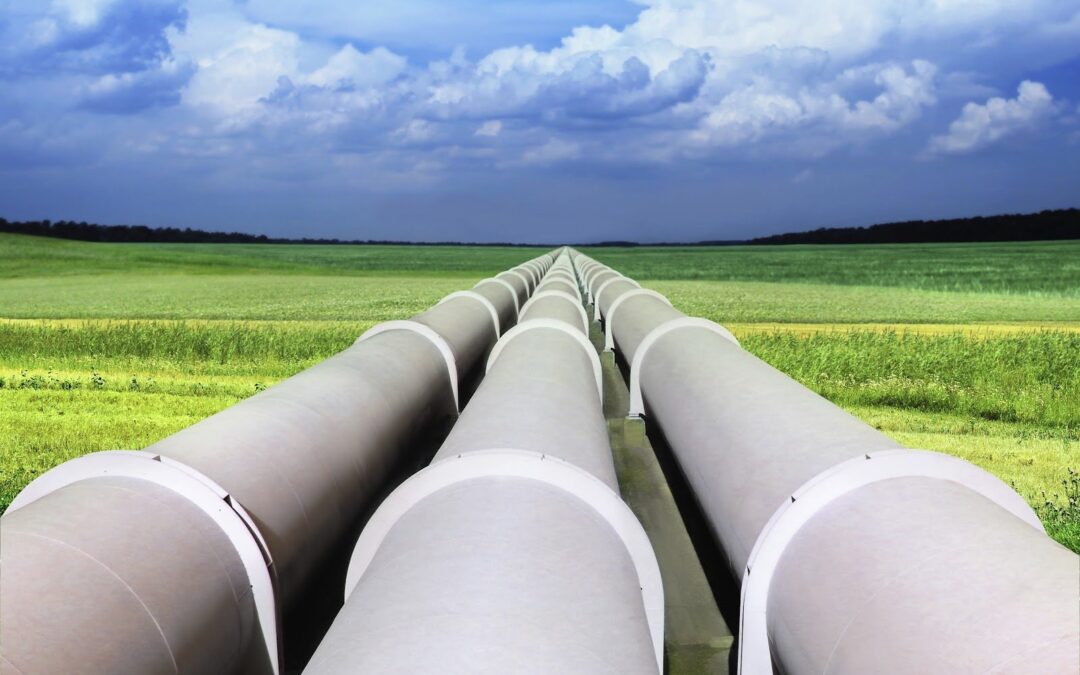
by Jordan Mason | Sep 1, 2023 | Archived
The Tazewell County State’s Attorney’s Office has filed a petition to intervene in Wolf Carbon Solutions’ pipeline construction application.
The petition comes two days after the anti-pipeline group Citizens Against Predatory Pipelines made a presentation before the Tazewell County Board. Concerned citizens also spoke against the pipeline, raising concerns about safety and eminent domain.
The pipeline would enter Tazewell County on the southern edge of Pekin and cut a southeastern path through the county en route to Logan County, and ultimately, a permanent underground sequestration site in Decatur. The high-pressure pipeline transports liquefied carbon dioxide captured from ethanol plants. Carbon capture and sequestration is touted as a measure to cut carbon emissions.
A petition to intervene doesn’t mean the county is taking a stance on the pipeline project. Rather, the petition keeps the county apprised of proceedings before the Illinois Commerce Commission regarding the process and allows the county to actively participate.
The city of Peoria has also filed as an intervenor. Peoria County hasn’t filed a petition to intervene.
The Illinois Commerce Commission is due to make a decision on the pipeline construction application by May 16, 2024.
We depend on your support to keep telling stories like this one. You – together with donors across the NPR Network – create a more informed public. Fact by fact, story by story. Please take a moment to donate now and fund the local news our community needs. Your support truly makes a difference.
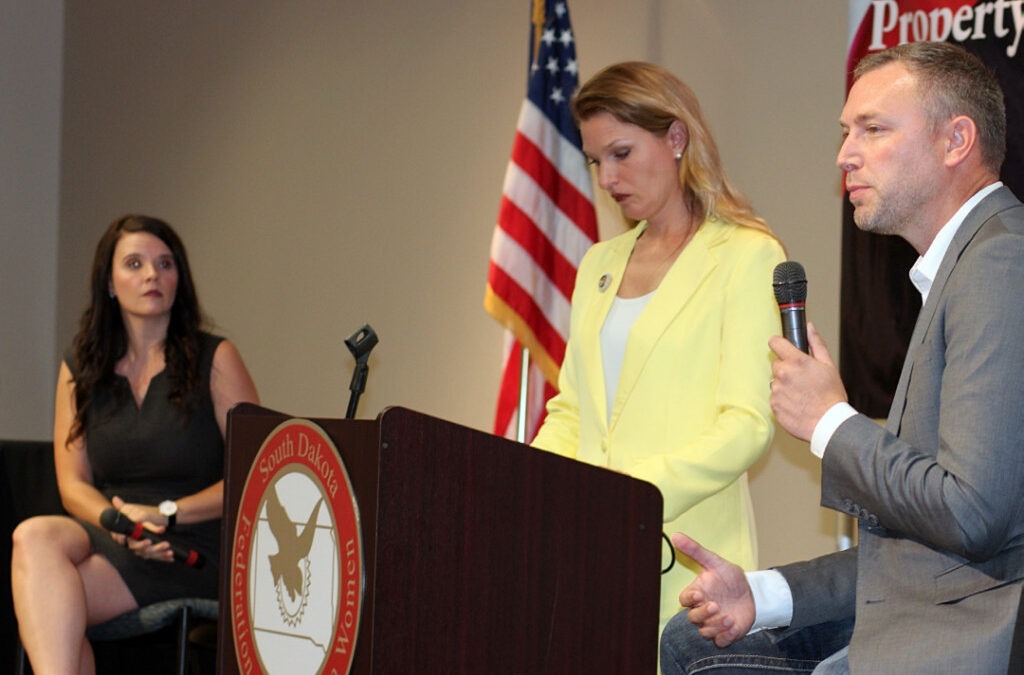
by Jordan Mason | Aug 25, 2023 | Archived
By: John Kubal, The Brookings Register
Updated: 3 hours ago / Posted Aug 25, 2023
BROOKINGS — The issue to be debated was “Property Rights & CO2 Pipeline.”
It was billed by the South Dakota Federation of Republican Women and the Sioux River Republican Women as a debate to “delve into the pros and cons, seek to inform but not to influence and to provide the public with as much information as possible in a fair and orderly manner.”
The venue was the Dacotah Bank Event Center, Brookings, on Tuesday evening. About 500 people were in attendance. The debaters were State Rep. Jon Hansen (R-Dell Rapids) and Elizabeth Burns-Thompson, Navigator CO2 vice president of Government and Public Affairs.
Sara Frankenstein, public relations chair of SDFRW served as moderator. Over the course of the 1-hour debate the key topics were government subsidies, safety and eminent domain, with an add-on brief look at “climate change.”
A coin toss had determined that Burns-Thompson lead off. In her very brief introduction, noting her first-generation ties to agriculture, she welcomed the “opportunity to start a dialogue.”
Hansen, a land owner and fifth-generation farmer, in his opening remarks cited government subsidies as “everything to this project. I would characterize this project as a boondoggle.
“This wouldn’t be happening without 45Q tax credit that’s funding the sequestration of carbon. That’s just the reality of it, folks. You might hear something different, but the reality is there’s no free market that’s driving this. This is being driven by massive federal subsidies.”
He added that “with a different administration that might change. I’d be grateful for a different administration, frankly. That would put an end to the 45Q tax credit and we could restore the free market. “
“I think we’re going to have our first opportunity to agree to disagree,” Burns-Thompson said in rebuttal. She noted that 45Q tax credits have been around since 2008 and were a product of the second-Bush administration.
“It was further expanded by the Trump Administration in 2018. It was expanded again in 2022.” She did admit that federal subsidies were “a driver” on CO2 sequestriation; but the market place’s biggest users of all types of fossil fuel products — such as California, Washington state, Oregon and Canada — are making investments tied to CO2 sequestration.
Burns-Thompson then pointed out the value of the various byproducts that spin off for corn growers in addition to ethanol itself — such as corn oil and distillers dry grain — and that an infrastructure needs to further grow to support those byproducts: “to further crack that last kernel.”
As to his supporting the additional byproducts tied the production of ethanol, Hansen cited his voting record during his eight years in the state House: he cast “not a single negative vote when it comes to ethanol. I’ve always been very pro ethanol. And I’ve always put ethanol in my gas tank.”
However, he noted that “when it comes to the future viability of ethanol, I think what we’re actually doing by following these policies that are set forth in California, Washington, Oregon and Canada … are going to long-term decimate, destroy the ethanol industry.”
He added, “Those policies that we’re chasing after in those markets aren’t free-market policies either. Those are sort of climate-crazed regulators and legislators in those jurisdictions that are setting these policies.”
Additionally, he noted that those states are looking at banning the sale of new combustion engines by 2035.
“Chasing those markets and appeasing those regulators is the last thing that ethanol should want to do. … It’s a terrible long-term strategy for ethanol. We should be defeating those policies.”
Sparring over safety
When the topic shifted to safety, Hansen did admit that in many situations, pipelines can be the safest mode of transportation. However, pressure is a big factor.
Hansen noted that natural gas moving in a pipeline exerts 500 to 700 psi. A carbon sequestration pipeline can exert 2,200 psi.
He explained that “plume studies,” that are key to safety issues of pipeline safety, have not been released to the counties that would have carbon pipelines running through them or been released to the public.
“Maybe Miss Burns-Thompson tonight will commit to disclosing them to the counties and to the people,” Hansen said. “I think that would be good.”
Burns-Thompson said that research shows that “pipelines are absolutely the safest and most reliable mode of transport, in large part because of the variables that are within our control, as compared to rail and trucks.” Moving CO2 moving via pipeline could replace a half-million trucks and 100,000 rail cars.
As to the release of plume studies data, she noted the need for security of some information being released because “there are some bad actors out there.” And there are some “homeland security concerns” not unique to CO2 pipelines but also applicable to infrastructure and other modes of transportation that preclude release of certain types of information.
“I think you just heard it,” Hansen responded. “Toward the end of my last response, I did ask Miss Burns-Thompson if she would be willing to release those plume models. That’s the most significant piece of information when it comes to your security next to that pipeline. They won’t release it; and they haven’t released it to the counties. I don’t think we’re too dumb to understand safety modeling.”
Eminent domain: Heart of the issue
Burns-Thompson was first to respond when the question shifted to voluntary cooperation versus eminent domain: “We want to do this project in as voluntary a fashion as is possible. Can I guarantee to you tonight that we can do every single mile of this without some application necessary … . No, I can’t make that commitment tonight. And I don’t think there has been a pipeline built that can make that pledge.” She did note that to date no application to use eminent domain has been made.
Hansen responded that the first page of a letter that Navigator CO2 sent to landowners said they “were already threatening to use eminent domain.”
He noted: “Eminent domain is the heart of the issue. … We talked about what is public use. The bottom line here is that this is not in the public use and should not be eligible for public domain.”
As to the going on to landowners’ property in violation of their rights, Burns-Thompson said, “We are trying to be accommodating as far as that survey work. … We are trying to follow not just the letter of the law.”
Burns-Thompson was also first to respond to a question about the impact of CO2
on “climate change” by the ethanol industry. “Regardless of your personal opinions — for, against, neutral, strongly — on climate change, you can still be a supporter of economic value … of what we are doing.” She added that “no one industry can solve the global problem.”
Hansen responded that while the Navigator project would be good for “capturing 45Q tax credits, it would do nothing for overall global temperatures. … This aint going to do anything.”
As the debate neared its end, he referenced a “leftist climate agenda … wasteful federal spending but I can’t get in the way. But it comes down to being voluntary. That’s what it’s really all about. Don’t take these peoples’ land without their consent.”
Any common ground?
The final question was: “Is there common ground between both positions and if so, where is it?” Burns-Thompson was first to answer. She did see things that were agreed upon: “Overall we want the Midwest to be successful. … Change is necessary. There is a right way to develop infrastructure: in a voluntary fashion; in a transparent fashion.”
Hansen responded: “I think if you did this voluntary and if you did it safely, I don’t think you’d see very many people in this room tonight. But when you start coming into South Dakota and try to take people’s land without their consent and subject them whether they like it or not to safety risks.
“That’s where the problem is. Commit to doing it voluntarily. We didn’t get that at tonight; we got the opposite. … Let’s be honest; they’re going to have to use eminent domain.”
In her closing statement, Burns-Thompson said she hoped this “was the start of a collective dialogue. I want to have a conversation.”
Hansen noted that Navigator CO2 was 84 percent owned by Blackrock, a multinational investment company out of New York City. “Some states won’t even do business with Blackrock because of some of their policies.” And 14 percent is owned by a fund out of the United Arab Emirate. Less than 2 percent is owned by South Dakotans and others.
His ending words: “And at the end of this, the landowners are going to prevail.”
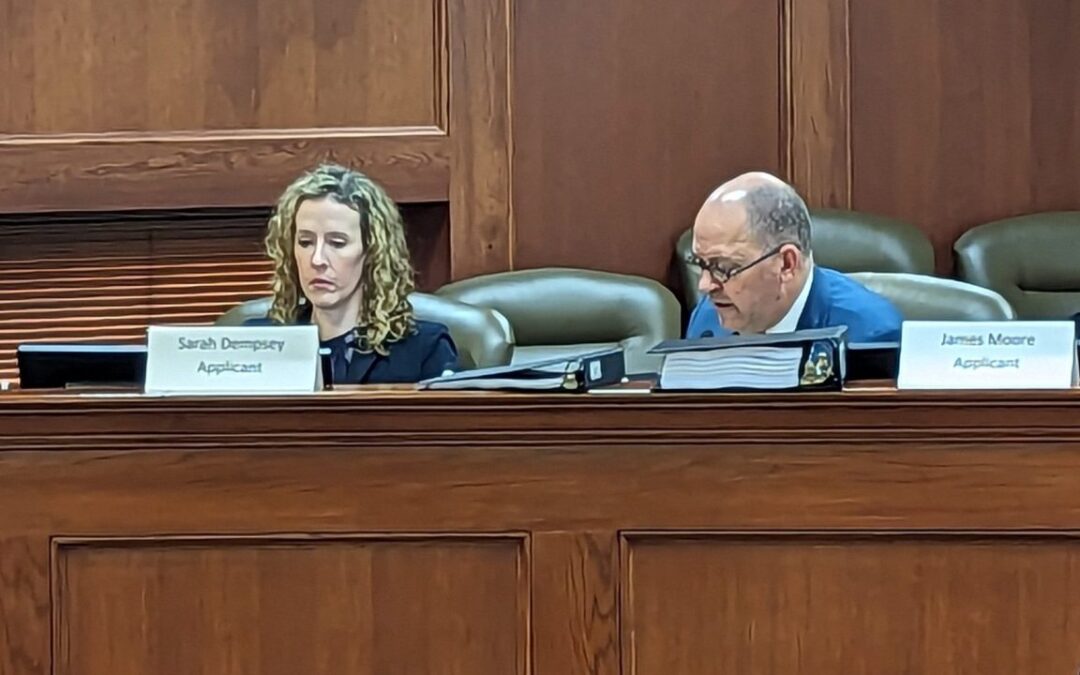
by Jordan Mason | Aug 25, 2023 | Archived
PIERRE, S.D. (KELO) — Top Navigator officials have reversed themselves and decided to let the public see a plume map showing potential effects from a rupture along the proposed route of the carbon-dioxide pipeline the company wants to build in southeastern South Dakota.
The state Public Utilities Commission on Thursday directed that the map be allowed as evidence and declared that it should be a public document, but also cautioned that it’s not yet accurate. The map shows the effects along the entire South Dakota portion of the route.
Commissioner Chris Nelson said the company must prepare and deliver a more-detailed map. “At that point, it should be released to the public,” he said.
The commission will decide on September 6 whether to grant a permit.
Commission chair Kristie Fiegen said the map that was offered Thursday presented only a partial picture of the possible effects. “It may not be the worst-case scenario. It isn’t,” she said.
Commissioner Gary Hanson favored releasing the map. He said people were “very leery” of the possible damage in the event of a rupture. “I think the more knowledge folks have, the better,” he said. He said that people would see the effects might not reach as far as many fear.
“There’s a whole lot more data that will be added to this,” Nelson said. He said the map shows that the effects wouldn’t stretch for “miles and miles and miles.”
Testifying for Navigator was Monica Howard, the company’s regulatory and environment vice president. She said the map was the visual representation of a lot of scientific information. Normally, she said, the information shown on the map was kept confidential for security reasons. “Creating them for public consumption is brand new to me,” she said.
The decision to offer to publicly release the map, if the commission directed it, was made at the company’s top level, Howard said.
Fiegen said the map didn’t reflect many variables. “I don’t want the public to have the wrong information, because we didn’t get all the information in your plume study,” Fiegen told Howard. “I guess that’s more of a comment than a question.”
The commission will decide either today or Friday whether to override pipeline zoning ordinances passed for Minnehaha and Moody counties. Navigator says the project can’t proceed if those ordinances stay in place.




 The Tazewell County State’s Attorney’s Office has filed a petition to intervene in Wolf Carbon Solutions’ pipeline construction application.
The Tazewell County State’s Attorney’s Office has filed a petition to intervene in Wolf Carbon Solutions’ pipeline construction application.

